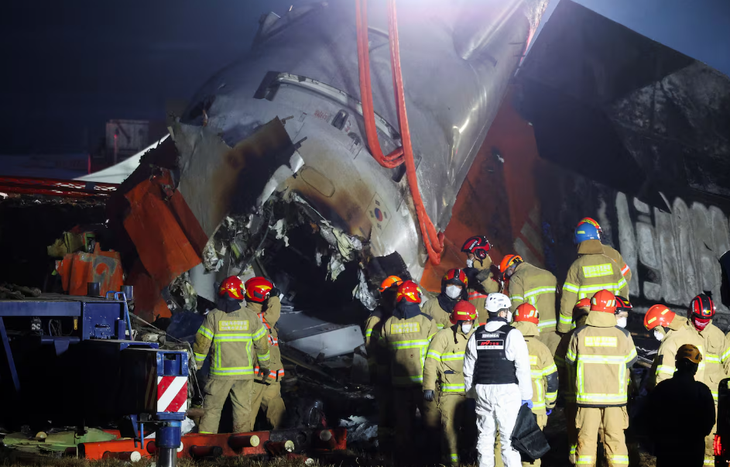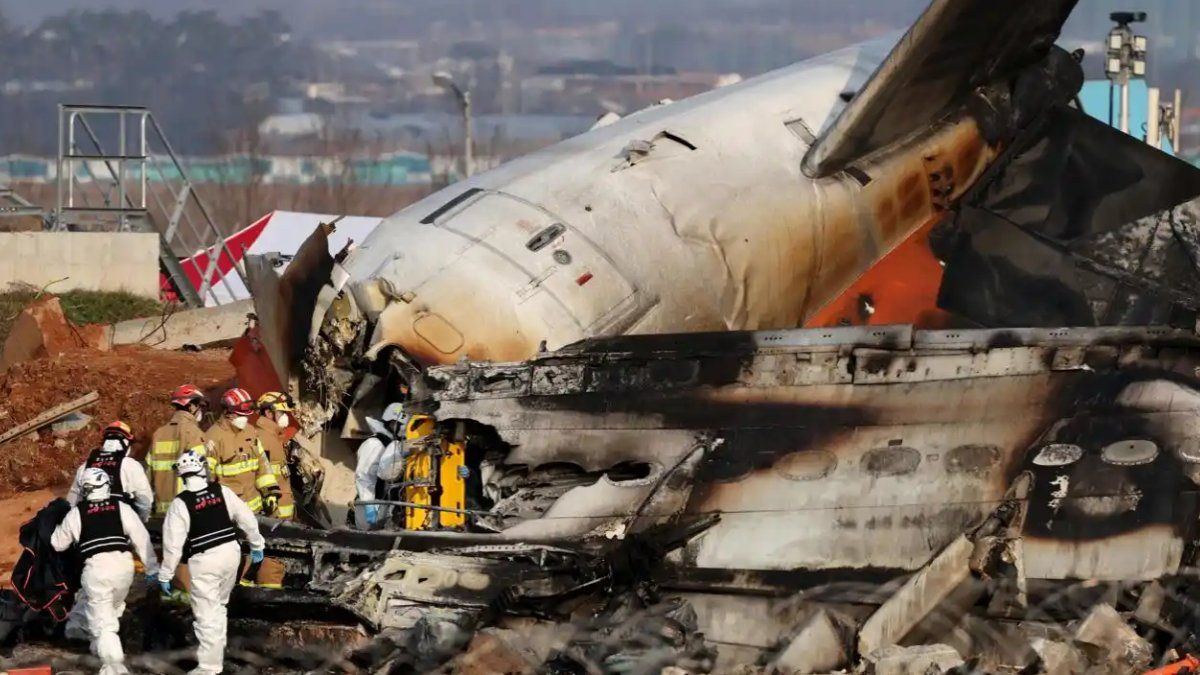The Jeju Air plane crash caused 179 deaths. Only two people survived. In this framework, all the hypotheses that specialists investigate.
The accident of flight 7C2216 of the South Korean airline Jeju Air, that occurred this Sunday, left a tragic toll of 179 dead and only two survivors. The main hypotheses point to a possible impact with a bird and a failure in the landing gear as the causes of the accident.
The content you want to access is exclusive to subscribers.
However, a statement by aviation expert David Learmont, consulted by Sky News, generated controversy by stating that, It hadn’t been for the concrete wall which the plane crashed into at the end of the runway, “everyone would be alive now.”


The Boeing 737-800 caught fire after colliding with the concrete wall at Muan International Airport, located 290 kilometers southwest of Seoul, South Korea. The flight had taken off from Bangkok, Thailand. In addition, a video was released that captured the moment of impact, generating international commotion.
Screenshot 2024-12-29 161335.png

Boeing 737-800 caught fire after colliding with concrete wall at Muan International Airport
Six minutes before landing, flight 7C2216 received an alert avian risk issued by the airport control tower of Muan. This alarm is activated when a flock of birds or large birds is detected in the plane’s path. Shortly after, the plane skidded off the runway and crashed into a wall, causing it to explode.
Two minutes after the alert, The captain issued a “mayday” indicating an emergency situation. Upon landing, the landing gear and other braking mechanisms, such as spoilers (moving plates on the wings that generate drag) or reverse thrust from the engines, were not deployed. Pre-landing images show flames in the right engine, possibly caused by a bird strike. Howeverexperts believe that a failure in one engine should not have affected other systems. This raises questions about possible additional failures in the aircraft or its maintenance.
The investigation could last between six months and several years, because one of the black boxes, the flight data recorder (FDR), suffered partial damage, complicating its decoding.
The concrete wall and the controversy
A controversial aspect of the accident is the presence of a concrete wall at the end of the runway. David Learmont, an aviation expert consulted by Sky News, said that without such a wall, the victims could have survived. According to Learmont, the plane would have stopped safely even with landing gear failure, since “it was not on fire and was under control” before impact.
The specialist stressed that the plane landed correctly, with the wings level, and was handled appropriately until it collided with the wall. The key to the investigation, according to Learmont, will be to determine why the pilot did not deploy the flaps or the landing gear, which caused the plane to land at a much higher speed than expected.
Source: Ambito
I am a 24-year-old writer and journalist who has been working in the news industry for the past two years. I write primarily about market news, so if you’re looking for insights into what’s going on in the stock market or economic indicators, you’ve come to the right place. I also dabble in writing articles on lifestyle trends and pop culture news.




